Title : Clearing the circuit: How dialysis versus perfusate exchange shapes donar lung performance during ex vivo lung perfusion
Abstract:
Introduction: Lung transplantation remains a life-saving treatment for patients with end-stage lung disease however only 20% of donated lungs are suitable for transplantation. Ex Vivo Lung Perfusion (EVLP) enables rehabilitation of donor lungs but its closed-circuit design results in electrolytes, acids and metabolites accumulation in the absence of renal clearance. This review compared dialysis and perfusate exchange (PE) to identify an optimal approach to extend lung preservation, improve donor lung utilization and guide future development of perfusion platforms.
Methods: A literature search of PubMed and Embase was conducted to identify human and animal studies evaluating dialysis or Perfusate Exchange (PE) during EVLP. The search yielded 666 articles of which 10 full texts were screened and 5 met inclusion criteria for this review.
Results: Dialysis consistently lowered sodium, potassium, chloride and lactate accumulation while increasing calcium and glucose and maintaining physiologic pH. PE did not sustain physiologic pH and electrolyte levels with only transient reduction in lactate. Despite metabolic advantages, dialysis did not significantly improve oxygenation, compliance or airway pressures, although higher filtration rates elevated pulmonary vascular resistance and pulmonary artery pressure. Inflammatory profiles were mixed: TNFα, IL-6 and IL-8 showed no significant differences, IL-1β and IL-10 frequently increased with dialysis, suggesting a potential protective or compensatory response.
Conclusion: Dialysis provided superior metabolic and acid–base stabilization during EVLP compared with PE, but these biochemical gains did not improve lung mechanics or oxygenation. Higher dialysis filtration rates increased pulmonary vascular resistance and pulmonary artery pressure. IL-10 levels were consistently elevated with dialysis, while IL-1β rose with high-filtration dialysis, suggesting a trade-off between enhanced solute clearance, vascular stress and early inflammatory activation at the blood–dialyzer interface. These findings can guide future studies aimed at extending EVLP durations and assessing post-transplant outcomes to clarify their long-term clinical impact.



